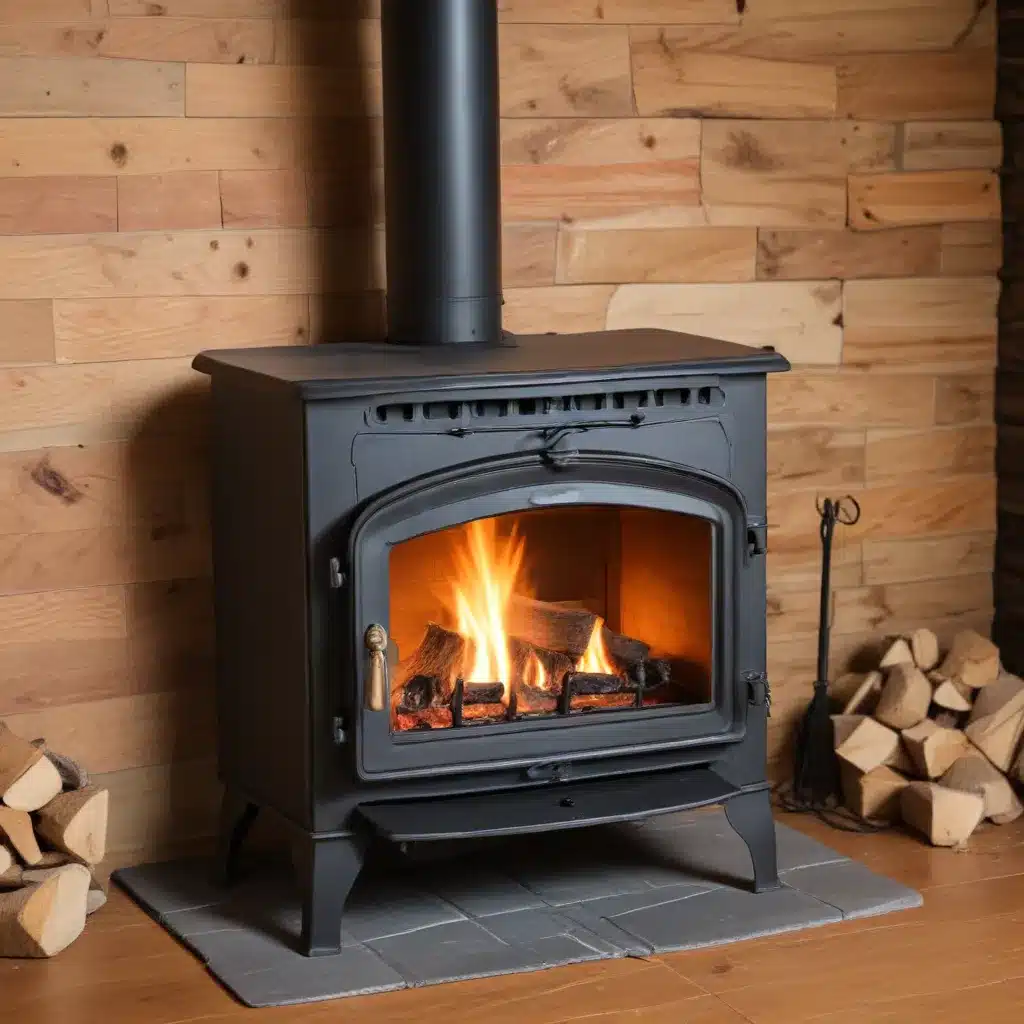
As a seasoned expert in wood stove heating solutions, I’m here to share practical tips and in-depth insights to help you prevent chimney fires and ensure the safe, efficient, and responsible use of your wood stove. Chimney fires can be a serious threat, but with the right knowledge and precautions, you can keep your home and family secure while enjoying the warmth and ambiance of a wood-burning stove.
Understanding the Risks of Creosote Buildup
At the heart of most chimney fires is a substance called creosote – a highly combustible byproduct of burning wood. Creosote is a gummy, foul-smelling, and corrosive material that can accumulate inside your chimney over time, coating the walls and obstructing airflow. If left unchecked, this creosote buildup can ignite, leading to a dangerous and potentially destructive chimney fire.
The telltale signs of a creosote-fueled chimney fire include a “popping, crackling noise” coming from the stovepipe and “flames shooting from the top of the chimney.” If you ever encounter these warning signs, it’s crucial to act quickly by closing the stove’s flue and contacting emergency services immediately.
Effective Strategies to Prevent Chimney Fires
To safeguard your home and family from the risks of chimney fires, consider implementing these proven strategies:
1. Regularly Clean and Inspect Your Chimney
Maintaining a clean, well-functioning chimney is one of the most effective ways to prevent creosote buildup and reduce the likelihood of a chimney fire. Experts recommend having your chimney professionally cleaned and inspected at least once a year, or more frequently if you use your wood stove extensively.
“When our stove pipe is getting clogged up and needs to be cleaned, we can always tell. When our stove is consistently not drafting well and smoke comes out the door rather than drafting up the stove pipe, we know it’s time to clean it out.”
For homeowners comfortable with DIY maintenance, investing in a chimney brush and extension rods can be a cost-effective solution. However, for those who prefer a more hands-off approach, hiring a professional chimney sweep service is a safer and more reliable option.
2. Burn Dry, Well-Seasoned Firewood
The type and condition of the wood you burn in your stove can have a significant impact on creosote buildup. Wet or unseasoned wood will not burn as efficiently, leading to increased smoke and a faster accumulation of creosote in your chimney.
“If your wood is wet or not fully cured, it will not burn as hot as dry wood. It will also smoke more. Burning wet wood leads to creosote building up faster in your chimney.”
When possible, use the hardest, most well-seasoned firewood available, such as Douglas Fir, Larch, or Lodgepole Pine. Avoid sappy woods like Ponderosa Pine, as well as softwood scraps, which can also contribute to creosote issues.
3. Maintain Proper Airflow and Burn Temperatures
Ensuring your wood stove is operating within its optimal “burn zone” is crucial for preventing creosote buildup. Burning your stove at the recommended temperature range, typically indicated by a thermometer attached to the stovepipe, can help ensure complete combustion and minimize the release of creosote-producing gases.
“We have this handy gadget that attaches to our stove pipe to gauge the temperature. I love this thing since it shows not only when we are in the ‘burn zone’ but when the stove is getting too hot and into the ‘over fire’ zone and we need to close the flue a bit.”
Additionally, providing adequate combustion air to your wood stove is essential for a clean, efficient burn. In airtight or small spaces, consider installing a dedicated air supply to ensure your stove receives the necessary airflow.
4. Utilize Creosote-Reducing Additives Judiciously
While not a substitute for regular chimney cleaning, some homeowners have found success in using creosote-reducing additives or powders. These products are designed to help transform accumulated creosote into a more easily removable form.
“This is a powdery substance you put in your wood stove and then burn a hot fire. This is supposed to turn the creosote into a powder. This is not a replacement for cleaning your chimney but can help reduce the creosote.”
However, it’s important to use these products sparingly and according to the manufacturer’s instructions, as some may contain questionable chemicals. Relying too heavily on these additives should not replace the essential task of professional chimney cleaning and maintenance.
5. Be Prepared to Respond Quickly in the Event of a Chimney Fire
Despite your best efforts, it’s possible that a chimney fire may still occur. In such an event, knowing how to respond quickly and effectively can make all the difference. One recommended tactic is to soak newspapers in water and throw them into the wood stove, which can create a large amount of steam to help extinguish the fire in the chimney.
“The firefighters told me I could have soaked newspapers in water and threw them in the woodstove. This would have created a lot of steam to help put out the fire in the chimney. Good tip to know, although I hope to never need it again!”
Remain vigilant, and if you ever suspect a chimney fire, immediately call the fire department for professional assistance.
Prioritizing Safety and Efficiency
By implementing these practical strategies, you can significantly reduce the risk of a dangerous and costly chimney fire. Remember, the key to safe and responsible wood stove use lies in maintaining a clean, well-functioning chimney, burning dry, seasoned wood, and ensuring proper airflow and temperatures.
For more information on wood stove heating solutions, energy-efficient upgrades, and fireplace maintenance, be sure to explore the resources available on https://woodstoveheaters.com/. Our team of experts is dedicated to helping homeowners like you stay warm, safe, and energy-efficient all year round.


